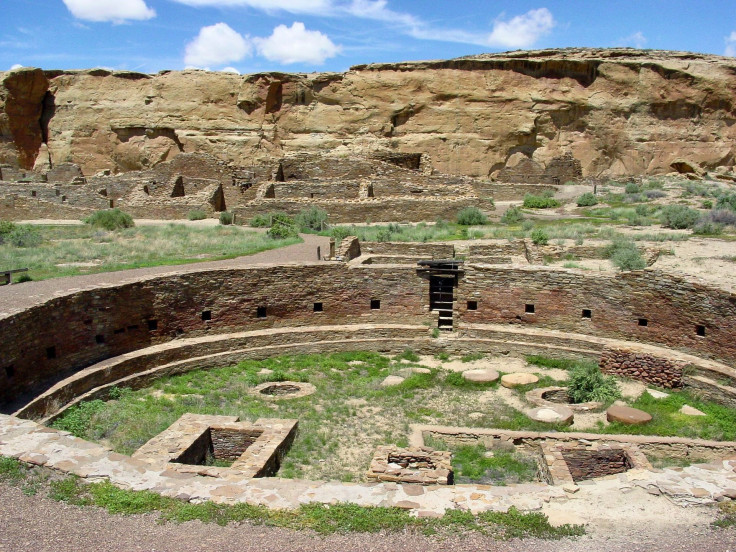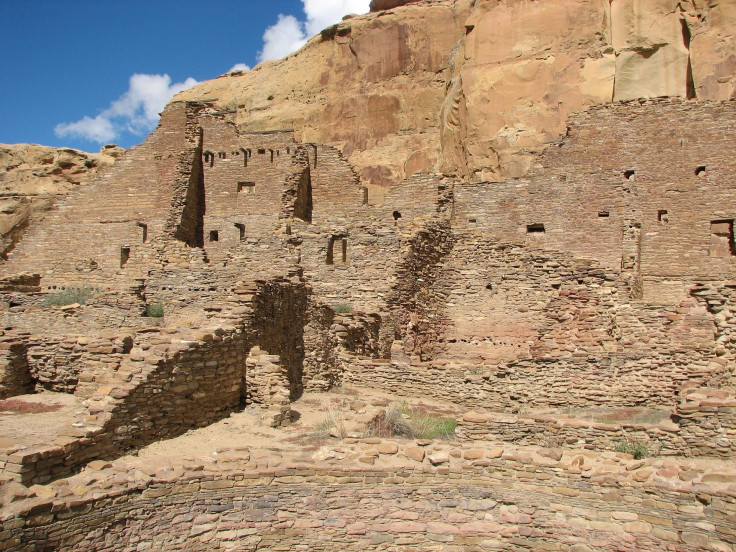Scientists Uncover Clues About Mysterious Ancient Chaco Canyon Civilization

An ancient society had a foot fetish, particularly when it came to feet with six toes. The strange detail is just one of many scientists are uncovering as they investigate the people of Chaco Canyon in what is now New Mexico.
There are many experts simultaneously digging into the canyon’s past to find out more about this long-gone civilization, which thrived 700 to 1,200 years ago, Science News reported. The research includes piecing together bone samples like puzzles to make whole skeletons that will tell stories about the society and examining both the complex building structures and artifacts the people left behind.
Read: Human Sacrifices Found in Ancient Kingdom’s Palace
One clue about the Chaco society is that there may have been an emphasis on maternal lineage, based on a genetic analysis showing that several people buried together in one particular crypt were related in that way. And it appears to have been a complex civilization divided into prominent families with power and commoners as early as the year 800.
The timeline puts the Chaco people forming their society while the famous ancient Mayans were at their peak.
Chaco Canyon is a World Heritage site in part because of the complexity of its ruins. According to UNESCO, the Chaco hosted religious ceremonies, commerce and political activities, “and they are remarkable for their monumental public and ceremonial buildings and distinctive multi-story ‘great houses.’ ” The people had an elaborate infrastructure “of carefully engineered and constructed roads, many of which can still be traced.”

But a lot still remains to be uncovered, and the fragments of evidence that the scientists are uncovering cannot yet paint a complete picture of how this historic society was organized.
“Huge pronouncements about Chaco social structure are being made based on partial, flawed data,” researcher Kerriann Marden told Science News. She is a forensic anthropologist who has been putting together skeletons from separated bone samples and studying them, but she warned against jumping to conclusions. “It’s like excavating only human foot bones and concluding that people at that time had no hands.”
Some of the findings, for that reason, are not set in stone. But others seem more straightforward, the publication noted. The fascination with feet comes in part from artwork that suggests the Chaco civilization “revered community members with six toes and often created images of human feet and footprints with and without extra digits.” There were also sandals on which extra space was made for extra toes.
Read: Scientists Recreate Ancient Woman’s Face
Few people are born today with six toes, but scientists don’t know what proportion of the population had them in the ancient southwestern United States.
“We don’t know why Chaco people were so interested in feet or what feet symbolized to them,” archaeologist Patricia Crown told Science News.
Whatever the scientists learn, it could tell us more about the ancient people who lived in the Americas and about the ancestors of people who live here today. As Science News noted, certain tribes like the Hopi and Navajo believe themselves to be related to the Chacos.
Although the Chaco nation is long gone, it’s not out of the realm of possibility that current populations would be related to them, nor would it be the first time a native tribe could trace their lineage to earlier American peoples. One recent genetic analysis, for example, proved that some Native American and indigenous Canadian groups on the northwestern coast, by the Pacific Ocean in British Columbia and southern Alaska, are descendants of the first humans who settled North America, after they crossed the now-underwater land bridge called the Bering Strait that connected the continent to Siberia. That analysis was performed by taking genetic samples both from ancient skeletons of people who lived thousands of years ago, the early settlers and from current native peoples.
A similar analysis performed in Australia proved native tribes currently living in that country were descendants of the first people to settle it tens of thousands of years before.
© Copyright IBTimes 2025. All rights reserved.





















